Question
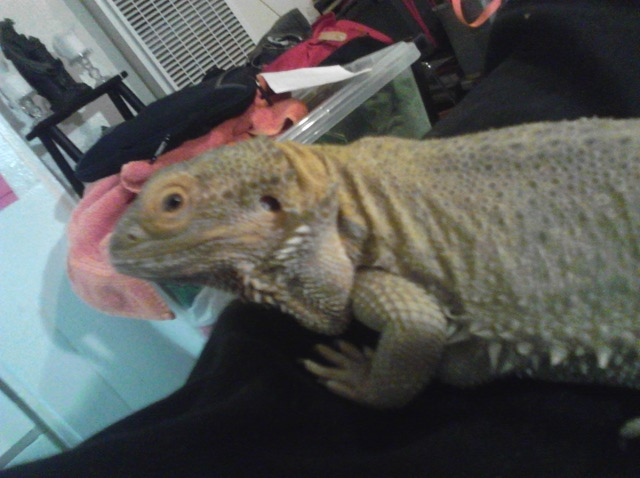 Oz
Oz
Good morning. I am worried about my boyfriends bearded dragon, Oz. he is in the process of moving houses, so im taking care of Oz. (i dont know if i am doing everything correctly, but did alot of research.) He has suddenly started making a quiet noise like a single soft pop when he breathes out. alot like the way a baby (human) sounds when it is sick and stuffed up. i noticed a few days, because i hold him alot. His UVB light is an 18'' 15w Flora-Glo. He has a 160w heat lamp on the right side of his tank with the uvb next to it. im using a digital thermometer to measure temps, and they stay anywhere from 68 (when its off at night) to 90 degrees during the day. I tried making it between 90 and 110 like everyone keeps saying, but when it passes 95, he gets all wierd, and just lays there with his mouth open panting, (stubborn) so i raised it. I place the thermometer on the highest/ closest point of his basking area to the bulb as i can, to make sure hes not melting. the left side of his tank has a hideout/ cooldown, with a water area, and a bowl of freezedried mealworms and crickets that i dusted with vitamins. he gets live crickets as well, and fruit and veggies. (i gave him some banana the other day, not sure if that was ok, but he loved it!) i also mist him with a pressurized bottle for about ten minutes every other day....his substrate is ground walnut shells, and i do my best to keep him from eating it with his food. i get worried when it happens, so i hand feed him alot. But anyway, he has suddenly started popping at random times when he exhales. what is this? how can i fix it? oh he is three years old as well. Thank you in advance!
AnswerHi Alice,
It sounds like your beardie may have an respiratory infection.. He needs to be seen by a vet so that the proper antibiotics can be given.
What you see as panting can be normal for beardies(not the popping you hear, but what you mention when under the basking light). They do gape like that when basking. It is very important to use a good thermometer placed right at your dragons height to monitor the basking(and other) temperatures.
The light you are using does not provide any needed UVB lighting for your beardie. It is VITAL that you get the proper uvb producing light for your beardie.
I am including a basic care sheet that I wrote to help people out with proper care. In it there is more on uvb lighting, etc.
Also, the ground walnut shells can be deadly...again, more in the care sheet about substrates.
Glad to see he is getting a varied diet!! Many people don't realize the importance of leafy greens, etc in their diet!! Bananas on occasion are ok...once a month is fine.
As to misting, you may find it much easier to bathe him every other day or so. Beardies don't do well with huge amounts of humidity, which can lead to the respiratory infections when kept in too humid of an environment.
BASIC BEARDED DRAGON CARE:
HOUSING:
For an adult bearded Dragon, a 50 -55 gallon is the smallest recommended tank. For a baby, nothing less than a 30 gallon tank will work for a very short time, so its best to just start out with the adult sized tank....you can add rocks and branches for climbing, being sure to not stack rocks too high to prevent them toppling over. Branches need to be secure. They like to have a hide log or cave also. CAUTION!!! be VERY careful with the driftwood pieces that have the holes in them!!! Be sure the holes are small as that if the holes are large, the BD MAY be able to get his head in them but not able to get it back out!!! A secure screen top is necessary for bearded dragons as that also they do not require much height for climbing..they can and do climb!! NEVER USE HEAT ROCKS OR HEATED CAVES!!! They malfunction and cause severe burns and even death!!!!
SUBSTRATES:
Young bearded dragons MUST be kept on paper towels, newspaper or other non particulate(loose) substrate to prevent them from getting any loose substrate into their mouth and swallowing it which can and does cause intestinal blockages.Once the BD is over 10 inches, some people have had good luck using play sand mixed with 50% of peat moss. I prefer the safe substrate of the newspaper, or other non particulate substrate to prevent any problems and also for ease of cleaning.
LIGHTING:
BD's need UVB, which is the special lights that come in fluorescent tubes or special screw in bulbs(mercury vapor)that are designed to produce uvb and heat. The tubes do not produce heat. UVB is needed by the BD to be able to absorb the calcium in the foods they eat. Without the uvb, they will develop metabolic bone disease. With the tubes, they must say that they produce BOTH uvb and uva. The uvb needs to be 5% or higher. Repti Sun 5.0 and 10.0(not compact) are TWO of the best uvb tubes on the market. The repti glo 8.0's are a great uvb source also. These need to be positioned 6-8 inches(for the 5.0 and 8.0 and 8-10 inches for the 10.0) over the BD so that they get the uvb that is needed. Recommended length of the tube is 24 inches or more. They need to be replaced every 6-9 months as that they stop producing uvb long before they stop producing light. They need to have access to uvb and basking
temperatures for 10-12 hours daily. At night, no white lights!!!
There are tubes and bulbs that say ''full spectrum'' but they do not produce any uvb.
On the mercury vapor , they also produce heat. They also produce the uvb and uva. The best on the market now are the MEGA RAY. www.reptileuv.com has more information on the Mega Ray lights. When using these, the distance is much greater than the uvb tubes and the directions must be followed that are listed for the light. When using the mercury vapor lights, you don't need to have one light for uvb and one for heat. The Mercury vapor lights provide both.
HEATING AND TEMPERATURES:
Bearded Dragons have specific temperature requirements. For heat when using the uvb producing fluorescent tubes, a regular household light bulb will work for DAYTIME heat. The wattage needed will vary to each situation such as tank size, room temperatures, air flow. Their basking area temperature must be between 95F and 105F degrees to allow proper digestion of food. Your basking area must be where the uvb light is as well as the heat source. Be sure that the BD cannot get too close to the heat source as that they WILL get burned! The ambient temperature range in the mid 80's . Cool daytime range of normal room temperature of low to mid 70's. Nighttime temperatures in the low to mid 60's is fine. NEVER USE HEAT ROCKS!!!!!!!!!!!!!!!!!!!!! A good digital thermometer is a must. I like using the duel ones with the probe...cost about 15$ at Wal Mart. The probe can be placed in the basking area at the BD's level to monitor this temperature and the main unit can be pl
aced in one of the ambient temperature areas. When reading them, the "out" reading is the probe area.
DIET:
Bearded Dragons eat and need both animal proteins and vegetable matter!!! As young dragons they eat a bit more of the insects. As they get older, as adults their diet is more of the vegetable matter. As young BDs, the diet is about 80% animal proteins and 20% vegetable matter. As they get older, the ratio changes. An adult will eat about 80%-90% vegetable matter and 10-20% animal proteins.
Animal protein sources are: Crickets, superworms, silkworms, roaches, hornworms, waxworms. Waxworms are considered candy to a BD so only feed on occasion in a small amount(2-3 worms). ALL insects must be properly gutloaded for at least 48 hours prior to feeding to the dragon. For crickets and superworms, this can be done with vegetables, plain cereals and commercial foods for the species. Silkworms and the other insects have their own diet needs. Its best to feed the crickets in a separate feeding tank such as a 10 or 20 gallon size tank or container with a well vented lid. This can make it easier for the dragon to catch the crickets and prevents any stray crickets in their "home" tank from deciding to nibble on the BD if he happens to not find them all. If you do feed in his home tank, be sure to place a 1/2 potato in the tank to help prevent the crickets from biting at the BD. ALL insects fed must be no larger than the space between their eyes to prevent choking. Be sure to dust the insects daily(for dragons up to 14-15 inches) (2x wkly there after)with a good calcium source such as Rep Cal calcium powder with no added Phosphorus. Young BD's up to 4 months of age will eat more crickets than anything. At this age they will usually consume anywhere from 10 to 30+ correctly sized crickets three times a day. Be sure to remove any uneaten crickets that are not consumed in a 15-25 minute time frame. For this reason, its easier to use a separate feeding tank for the bearded dragon. A 10 gallon tank(with a screen top) works well. Its best to offer their "salad" of greens/veggies before offering their morning insect feeding when they are hungry to prevent any problems with them preferring NOT to eat their salad. Their salad consists of Collard greens, mustard greens, turnip greens, dandelion greens...... this is the BASE of the green part of their vegetable diet. To this, for variety you can add arugula, escarole, endive,small amounts of bok choy or other Asian greens. For the vegetable part of the diet, green beans, butternut squash, acorn squash(other winter squashes are also acceptable) yams, sweet potato. For color, sweet peppers can also be added in a small amount. For baby BD's, using a food processor for the greens and veggies works well. As they get older, greens should never be larger than about an inch x an inch in size. Never feed lettuces as they have no nutritional value. The hard veggies should be either food processed or grated. Fruits can also be offered in small amounts. Good fruits are figs, papaya, melon, blueberries, strawberries, raspberries....and many other fruits... these need to be mashed or chopped. Watermelon is a good source of water for the dragon. Their salad can be dusted once or at the most, twice a month with a good vitamin supplement such as RepCal HerptiVit. This is by no means a complete list of foods the dragons can eat.You can also offer baby food chicken or small bits of boiled chicken.
Be sure to provide a dish of FRESH drinking water at ALL times!!! Misting their salad will also help get much needed water into them. NEVER FEED any MICE or other mammals to your Dragon!!!
WATER:
As stated above, always provide a dish of drinking water and mist their salad. You can also bathe your dragon a few times a week. (many bathe them daily for "bathroom duties") Temperature of the water should be between 85 and 95 degrees. The depth should never be any deeper than to cover his back when laying FLAT!!! Never leave them unattended at bath time to prevent possible drowning. Many love to soak and swim for 15 minutes or more. Never bathe less than two hours before his basking lights go out. Doing so can cause him to become too chilled, risking the chance of a respiratory infection.
A vet check up is recommended and a fecal sample taken in to be tested for any internal parasites.... To find a qualified vet in your area you can go to
http://www.herpvetconnection.com
http://www.arav.org/ECOMARAV/timssnet/amm/tnt_mdsearch.cfm
http://www.anapsid.org/vets/
More in-depth care info can be found at:
http://www.bio..miami.edu/ktosney/file/BDcare.html
http://www.sundialreptile.com/care%20sheet--bearded%20dragon.htm
http://www.blackninjakitty.com/herps/dragons
Most bearded dragons will take long naps (generally,if they are over a yr) in the fall.. this is called Brumation. is a form of hibernation. You can read more about that at
http://www.exclusivedragons.com/Brumation.html be sure to read this link as it tells you what to look for in brumation vs illness.
http://www.bio.miami.edu/ktosney/file/BDbrumate.html


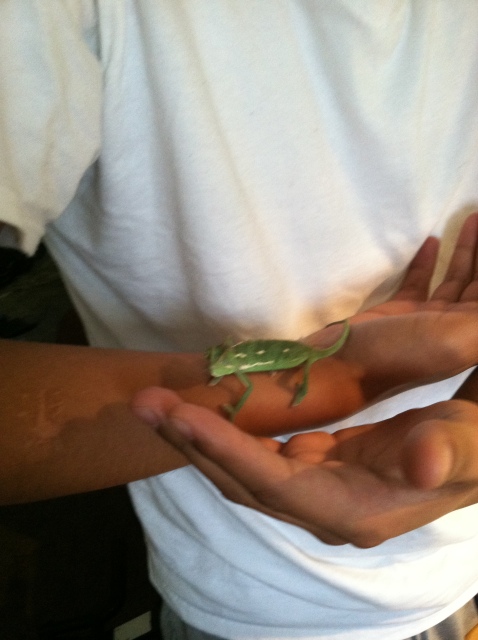 veiled cahmeleon
Question
veiled chameleon
I am very grateful for
veiled cahmeleon
Question
veiled chameleon
I am very grateful for
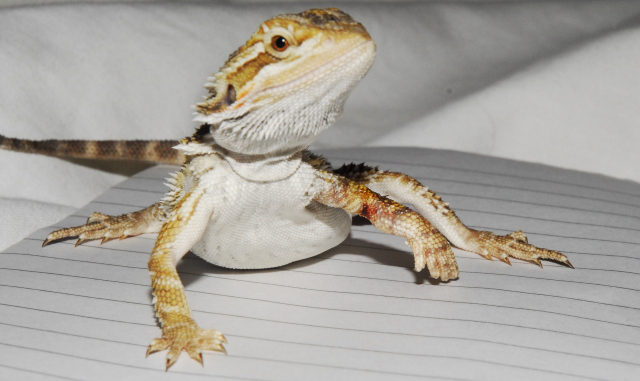 Baby beardy has broken arm
Questionshe still climbs but t
QUESTION: i hatch
Baby beardy has broken arm
Questionshe still climbs but t
QUESTION: i hatch
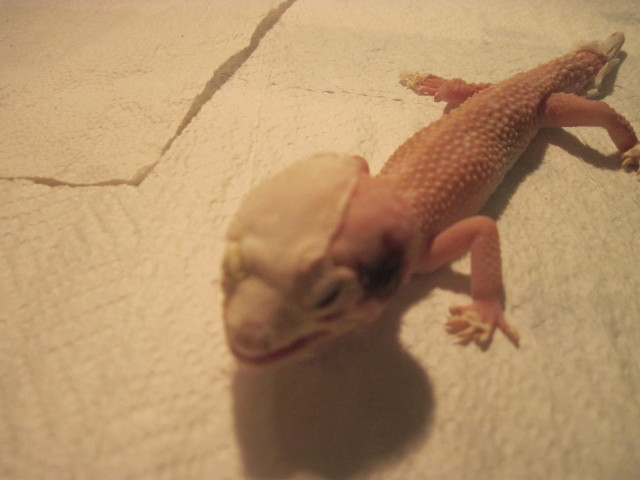 My albino gecko :/
QuestionQUESTION: A few months ago I got two geckos fro
My albino gecko :/
QuestionQUESTION: A few months ago I got two geckos fro
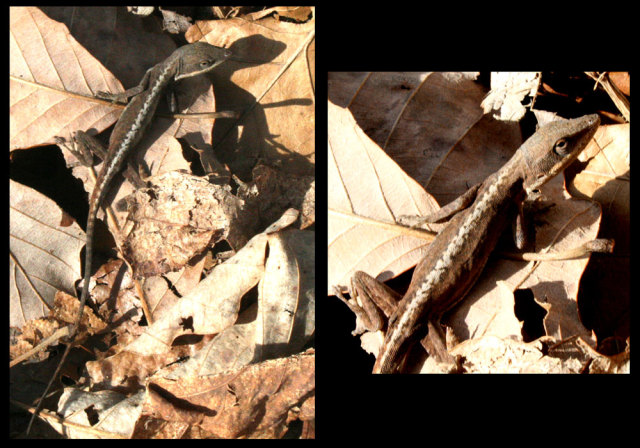 lizard id
Question
lizard-id
Hi. Can you please help identify thi
lizard id
Question
lizard-id
Hi. Can you please help identify thi
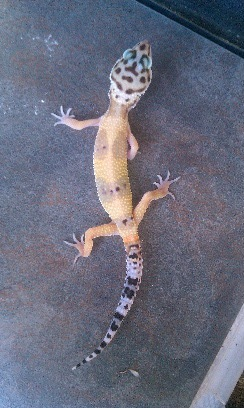 Female Leopard Gecko wont eat
Question
Mac
Hi,
I got 2 female Leopard Gecko a
Female Leopard Gecko wont eat
Question
Mac
Hi,
I got 2 female Leopard Gecko a